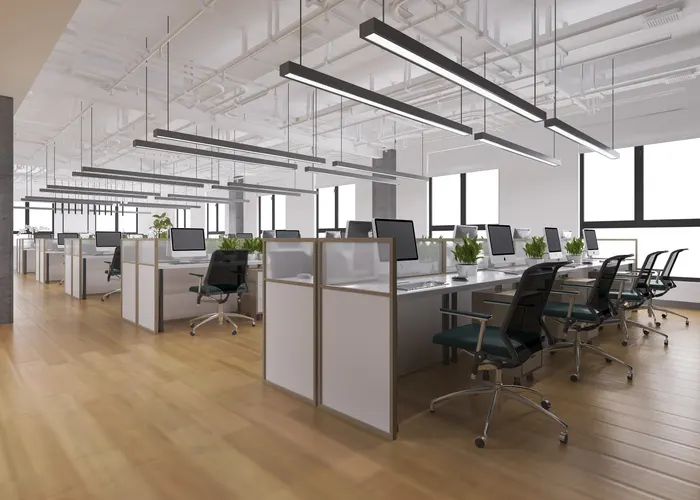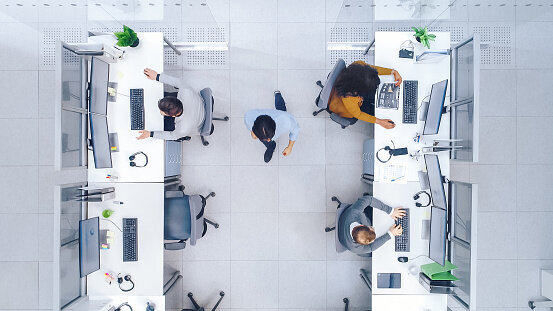Why is space utilization important and what is the relationship with space occupancy?
Your commercial property, whether rented or owned, is an essential business asset. Effective and strategic utilization of your working space affects your organization's productivity and profitability. Whether you're a retailer, museum, educational institution, or office-based business, the layout and functionality of your premises will influence the experience that occupants have on site. Here, the focus isn't on the aesthetics and design of the environment, but rather on its ability to efficiently meet the needs of your facility's users and visitors.
Space utilization is the method of measuring the size of your facility and incorporating occupancy data to understand movement throughout the property, the frequency with which certain areas are used, and the results that the existing layout yields.
When looking into space utilization, you may also come across the term 'space occupancy'. This refers to the maximum capacity of a specified area and the number of individuals physically present within it. Occupancy metrics will alert you when a peak number of individuals is present in a specific area – for example, when all of your existing workstations are being used. Although this metric is a must-know, it doesn't demonstrate whether the position or layout of the workstations has been optimized for the space. Find out more about how a smart building can benefit your business here.
How do you calculate space utilization?
Space usage has always been a priority for key stakeholders, but recent global events have forced many bricks and mortar facilities to analyze the metrics around utility even more thoroughly.
Measuring space utilization is an important part of not only managing your organization's budget and resource allocation but also providing safety and reassurance to occupants.
It's likely that you have a specific motive for measuring space utilization. For example, you want to create a more collaborative environment for employees by combining departments, so you'd like to find out how many desks you can safely fit into an open plan office and how to manage the space with mobile and on-site employees in mind. To get to the right answer, you'll have to consider a combination of different metrics such as occupancy rates, peak usage times, density, and dwell times.
The space utilization metrics you need to know
Daily peak utilization by space – The maximum number of individuals entering a specified area at any point in time.
Total square footage – The size of a facility in square foot, usually referring to usable space such as meeting rooms, office space, shop floor, storage, etc.
Average peak usage – A figure incorporating both staff and visitors to show the highest space-use periods in a given timeframe.
Total visitor traffic – The number of people entering and exiting your facility daily.
High traffic areas – This figure is used to identify areas that receive the highest footfall and density of visitors in relation to the rest of your premises.
Point-in-time occupancy – The total time of occupancy in a given zone, divided by the weekly time that this area is available to users.
Density – The number of occupants multiplied by average square footage allocated per employee. You'll then measure this against the overall occupancy of the space.
There are various other metrics that come into play when calculating space utilization. The ones you choose to apply will depend upon decisions you're looking to make with the data you extract.
Why is space management important?
Improved health and safety
In the aftermath of COVID-19, many organizations have been tasked with adapting existing facilities to accommodate social distancing measures. A space utilization analysis can help you to implement social distance measures, create more effective cleaning rotas based on the frequency of usage, and manage work schedules to avoid peak occupancy levels.
Lower costs and income-generating opportunities
With space utilization data, you can cut out unnecessary expenditures or find ways to repurpose underutilized areas. The current demand for space consolidation is encouraging businesses to adapt their real estate for a hybrid workforce that includes remote, mobile and on-site employees. Poorly managed office space costs London businesses more than £4 billion, annually. Companies are finding a solution to this problem by either renting parts of their buildings to other businesses, or teaming up with developers to create residential or retail spaces.
Having a firm grasp on space utility will help you to get the most out of your premises while improving and enhancing your facility management capabilities. As a result, you can make more cost-effective decisions that don't compromise your operations or the safety of employees.
A better experience for workers and visitors
An optimized workspace creates a more productive and comfortable environment for workers, helping to boost morale and loyalty towards your organization. In today’s climate, employees and visitors need an added layer of reassurance when entering a building. They want a space that’s easy to navigate and consistently prioritises safety. A recent study found that 85% of workers were unhappy with their workspace environment and struggled to concentrate. Your space utilization studies can help you to address their needs through fact-based data that ensures you're improving their space in a way that will have a truly positive impact on their experience.
Supports green initiatives
Enhanced space utility can also have a significant impact on your carbon footprint. By understanding how individuals interact with your space, where they commonly congregate, and how long they spend in these zones, you can conserve energy by controlling heating and lighting in vacant areas or removing them from your property portfolio altogether.
The best way to measure space utilization is with the help of occupancy sensors. Smart building technology, like the Irisys people counters that power the True Occupancy platform, provide facilities managers with real-time data that shows how occupants are using and navigating around your building. This highly accurate data can be accessed from the True Occupancy cloud platform by stakeholders to analyze and make decisions focused on more economic, safe, and effective space utilization objectives.
To find out more about our occupancy sensors and how they can help your business with space utilization when employees return to the workplace, request a demo or speak to an expert.
Share this
You May Also Like
These Related Posts

Why is Space Management Important for an Office?

How To Calculate And Optimize Your Office Space Utilization Rate

4 Office Space Management Best Practices
Connect with us
Need more information? Ready to get started? We're here to help, get in touch.


